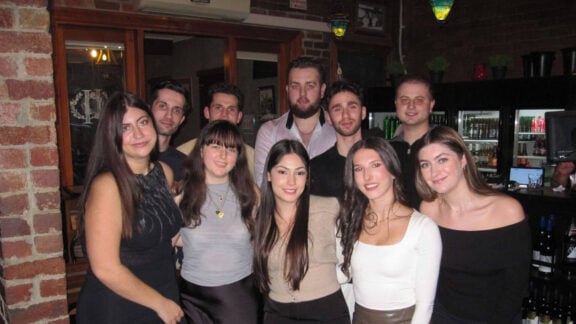Six months ago, the 70th anniversary of the Battle of Crete commemorated the sacrifice of thousands of Anzac soldiers and Cretans in May 1941.
The story of how diggers and kiwis fought with the people of Crete against overwhelming odds is well known, even if the battlefield sites seventy years later are almost entirely unmarked.
Last year I travelled with the family of Reg Saunders – the Indigenous Australian soldier who served with the 2/7th Battalion in Crete – to meet the family who protected the young Aboriginal soldier after the Allied surrender. Saunders would later become the first Aboriginal officer in the Australian army.
It was during this visit that I took Saunders’ eldest daughter Glenda Humes, to the site of a particular action where her father fought. It is called ‘the charge at 42nd Street’ and it is one of the least known, but most remarkable actions in the story of the Anzacs in Greece.
42nd Street was the name given by allied soldiers to a country lane south-west of the village of Souda, near Chania. On the night of May 26 1941, hundreds of exhausted Anzac troops dug in along the lane, facing west; the direction from which the enemy were continuing their unrelenting advance from Maleme.
At around 11am on May 27, the Germans appeared in the distance. Unknowingly, hundreds of elite soldiers of the 141st Gebirgsjager regiment advanced towards the Anzac lines, through the olive groves to the west of 42nd Street.
Official records have always been unable to confirm whether it was Saunders’ 2/7th or the NZ 28 Maori Battalion who began the action, but one story would forever symbolise the dramatic events that unfolded.
As the enemy came within fifty metres of the Anzac lines, a young Maori rose from his concealed position. With one hand on his hip and a clip of ammunition in the other, he began to lead the ‘Ka Mate’ haka. As the ancient war-cry rang out, the kiwis and diggers, bayonets fixed, charged as one.
Taken by surprise, the enemy fled in mortal fear and disarray. In the brutal pursuit that followed, between 200 and 300 German troops were bayoneted, shot or bludgeoned to death. The Anzacs lost around fifty men.
What makes the events at 42nd Street so important in the context of the Battle of Crete, is that it had very significant consequences in the endgame of the battle, buying precious time for the evacuating troops to get to the south coast.
Today, the lane that was 42nd Street is known as Tsikalarion. It’s an unremarkable road in a suburb of Chania. Not even the smallest road sign has been erected to honour the victors or vanquished at 42nd Street.
The experience of visiting the ancient olive groves that remain at this hallowed site moved Glenda immensely. A year later, the effects of the visit to the site are still very clear in her mind. “We were overawed,” says Glenda. “It was just an incredible feeling. You feel them still there, their spirits are still there.”
“Once I began to understand what happened, how it gave the troops breathing space to retreat, I felt there should be some recognition of the gallantry and sacrifice shown that day.”
On returning to Australia, Reg Saunders’ daughter was determined to ensure that a memorial of some kind would be erected to the memory of those who took part in the charge.
After a year of planning, the organisers received confirmation last week from the Municipality of Chania that it is their intention to support the project and find a suitable location for the memorial.
The memorial, to be produced in Australia, will take the form of a bronze plaque. Estimated to cost around $25,000, the plaque will tell the story of the charge in both Greek and English.
With official confirmation of support from the Cretan authorities in place, fund raising in Australia and New Zealand has now begun in earnest. “We’re about to submit an application to the Department of Veterans’ Affairs, and we’re approaching the RSL and its equivalent in New Zealand,” Glenda told Neos Kosmos.
“We’re also seeking private donations and sponsorships, and we’re very keen to hear from other organisations who believe in this project and who might be able to assist us.”
Further information on the 42nd Street Memorial Project is available from Glenda Humes at kirrin@hotmail.com









